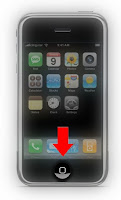Your USP is especially important when your product or service is
similar to those around you. Very few businesses are one-of-a-kind. Just look
around you: How many clothing retailers, hardware stores, air conditioning
installers and electricians are truly unique?
The key to effective selling in this situation is what
advertising and marketing professionals call a "unique selling
proposition" or “unique selling point” (USP). Unless you can pinpoint what
makes your business unique in a world of competition, you cannot
target your sales efforts successfully.
Pinpointing your USP requires some hard soul-searching and
creativity. One way to start is to analyze how other companies use their USP’s
to their advantage. This requires careful analysis of other companies ads and
marketing messages. If you analyze what they say they sell, not just their
product or service characteristics, you can learn a great deal about how
companies distinguish themselves from competitors.
For example, Charles Revson, founder of Revlon, always used
to say he sold hope, not makeup. Some airlines sell friendly service, while
others sell on-time service.
Each of these is an example of a company that has found a
USP "peg" on which to hang its marketing strategy. A business can peg
its USP on product characteristics, price structure, placement strategy
(location and distribution) or promotional strategy. These are what marketers
call the "four P's" of marketing. They are manipulated to give a
business a market position that sets it apart from the competition.
Here's how to uncover your USP and use it to power up your
sales:
Put yourself in your customer's shoes
Too often, business owners fall in love with their product or
service and forget that it is the customer's needs, not their own, that they
must satisfy. Step back from your daily operations and carefully scrutinize
what your customers really want. Suppose you own a pizza parlor. Sure,
customers come into your pizza place for food. But is food all they want? What
could make them come back again and again and ignore your competition? The
answer might be quality, convenience, reliability, friendliness, cleanliness,
courtesy or customer service.
Remember!, price is never the only reason people buy. If your
competition is beating you on pricing because they are larger, you have to find
another sales feature that addresses the customer's needs and then build your
sales and promotional efforts around that feature.
Know what motivates your customers' behavior and buying
decisions
Effective marketing requires you to be an amateur
psychologist. You need to know what drives and motivates customers. Go beyond
the traditional customer demographics, such as age, gender, race, income and
geographic location, that most businesses collect to analyze their sales
trends. For our pizza shop example, it is not enough to know that 75 percent of
your customers are in the 18-to-25 age range. You need to look at their motives
for buying pizza-taste, peer pressure, convenience and so on.
Cosmetics and alcohol companies are great examples of
industries that know the value of psychologically oriented promotion. People
buy these products based on their desires (for pretty women, luxury, glamour
and so on), not on their needs.
Uncover the real reasons customers buy your product
instead of a competitor's
As your business grows, you'll be able to ask your best
source of information: your customers. For example, the pizza entrepreneur could
ask them why they like his pizza over others, plus ask them to rate the
importance of the features he offers, such as taste, size, ingredients,
atmosphere and service. You will be surprised how honest people are when you
ask how you can improve your service.
If your business is just starting out, you won't have a lot
of customers to ask yet, so "shop" your competition instead. Many
retailers routinely drop into their competitors' stores to see what and how
they are selling. If you're really brave, try asking a few of the customers
after they leave the premises what they like and dislike about the competitors'
products and services.
Once you've gone through this three-step market intelligence
process, you need to take the next - and hardest! - step: clearing your mind of
any preconceived ideas about your product or service and being brutally honest.
What features of your business jump out at you as something that sets you
apart? What can you promote that will make customers want to patronize your
business? How can you position your business to highlight your USP?
Don't get discouraged. Successful business ownership is not
about having a unique product or service; it's about making your product stand
out - even in a market filled with similar items.












